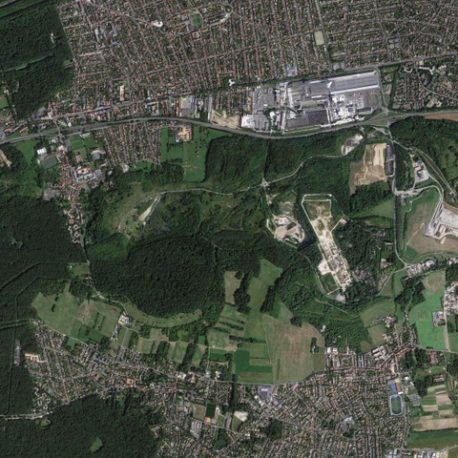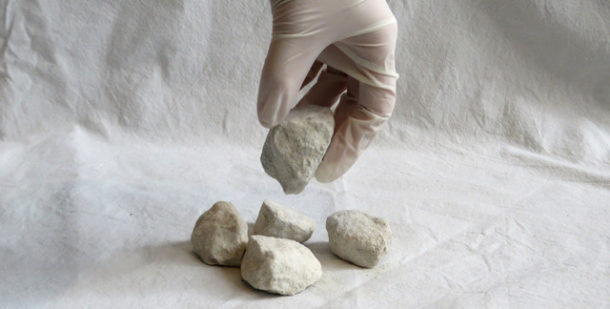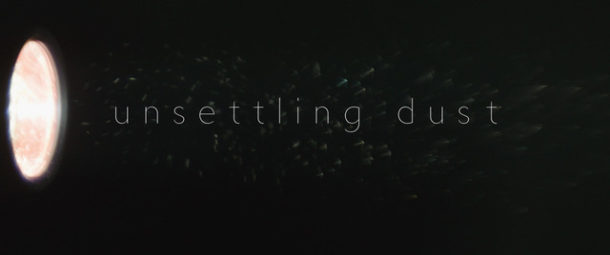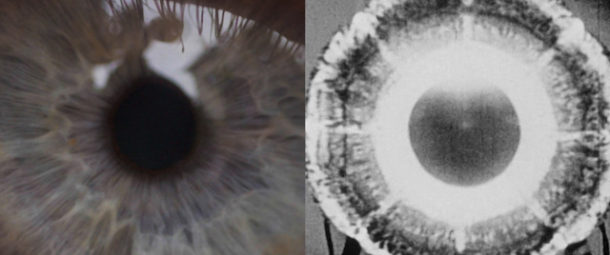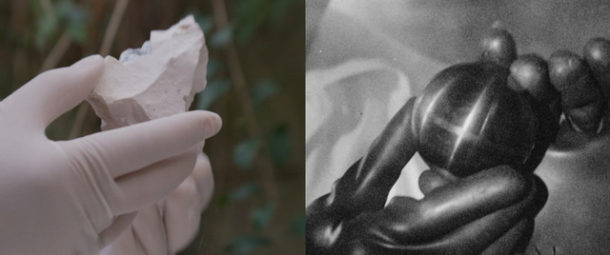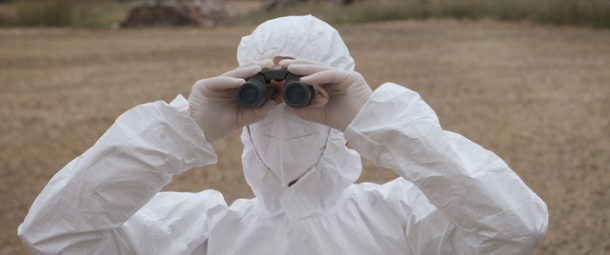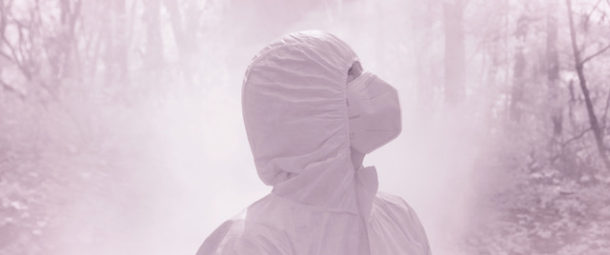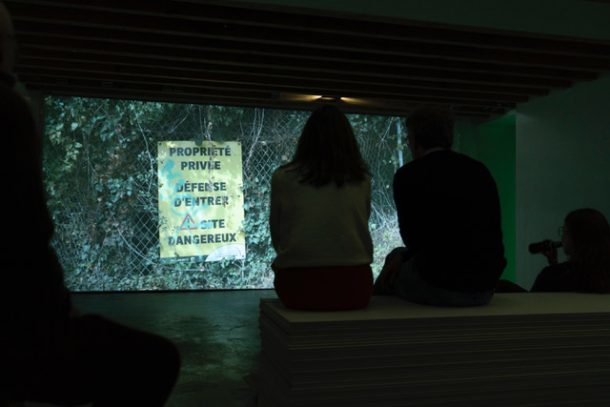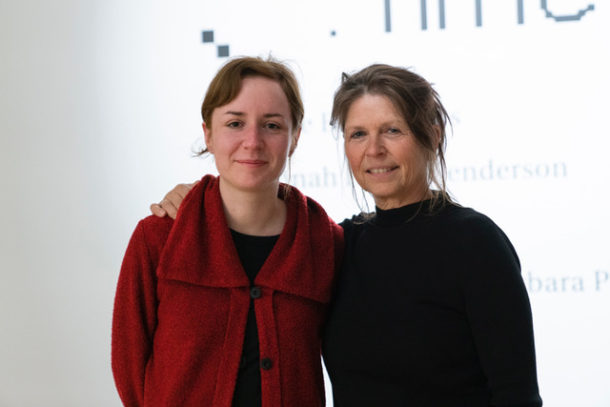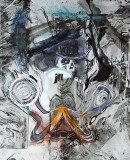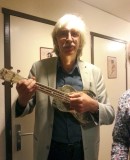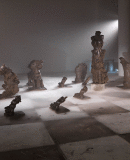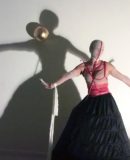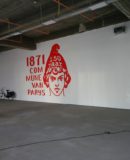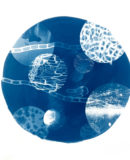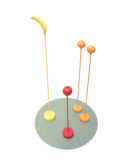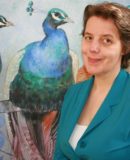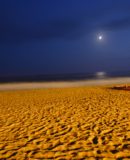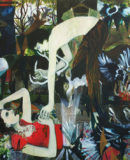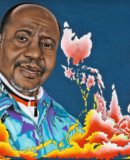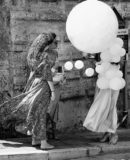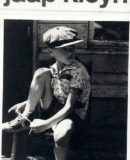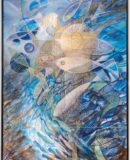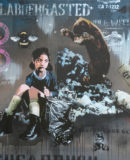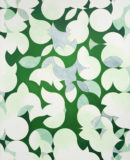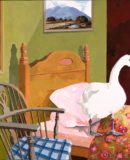World Fine Art Professionals and their Key-Pieces, 363 - Tineke van Veen & Barbara Prezelj
World Fine Art Professionals and their Key-Pieces, 363 – Tineke van Veen & Barbara Prezelj
Recently I saw a few video works at Stroom Den Haag, including ‘Unsettling Dust’ by Tineke van Veen and Barbara Prezelj. It was part of the Time-Based program with five films by national and international video artists. I spoke with both makers in the café of Filmhuis Den Haag.
Unsettling Dust investigates the physical effects of radioactive radiation by focusing on the relationship between post-nuclear landscapes and radioactive dust particles. The starting point is the post-nuclear landscape of Fort de Vaujours, a borough of the northeastern suburbs of Paris. The first nuclear tests in France took place here in a military fortress from the 19th century.
Nuclear Buildings
Under the new zoning plan, a gypsum mine will be opened on the site where the nuclear buildings used to be, a fertilizer and the main ingredient for stucco and drywall. In this way it is possible that the nuclear particles from Fort de Vaujours are spread all over Europe.
With our human senses and our comprehension, we are unable to fathom the magnitude and consequences of a possible contamination. Precisely this gap in our understanding is addressed in Unsettling Dust by the change of scale: instead of highlighting detachment and spectacle – characteristic of nuclear landscapes – the project focuses on intimacy and the feeling of alienation.
The makers
Tineke van Veen is a visual artist who researches the concept of safety and visualizes it in various ways. In her recent work she investigates how security is related to the disturbed relationship between people and the environment, more specific the landscape. Recently I saw her exhibition Unsettling Landscapes in art space Ruimtevaart in The Hague.
Barbara Prezelj is a landscape architect, designer, and researcher. She is currently writing her dissertation on landscape architecture at ESALA, Edinburgh College of Art, University of Edinburgh. Before this she studied landscape architecture at the TU Delft and graduated with the study Unfamiliar Territory: Approaching Posthuman Landscapes.
Visit to Vaujours
Barbara: “I am interested in the ‘affective’ qualities of the landscape and looked for landscapes that undergo a change in one way or another. Ancient landscapes turning industrial, for example. While searching I came across an interesting site: about Vaujours, a suburb of Paris, where the first nuclear test room in France was built in an old fortress. Tests took place. That space has since been vacated, but there are other plans. Searching on google I came across Tineke, who as an artist was involved in nuclear landscapes. I contacted her and we visited the Vaujours site together in 2015. “
Tineke van Veen graduated in 1989 at the Royal Academy of Fine Arts in The Hague, in 2014 she started with the master Film and Photographic Studies in Leiden, graduating with a theoretical and practical thesis of the nuclear landscape.
Fukushima
In 2014 she was invited to participate in the Fukushima Biennale and showed the film installation aware/哀れ. She had been to Japan before, to Shimabara in the south of Japan, in 2012, after the nuclear disaster of March 2011, where she realized her short film 身の安全を守る, ‘to protect your safety’ in collaboration with film director Eline Schellekens.
Tineke: “The film installation Aware takes a closer look at the cleaning of the Fukushima landscape, the people who clean this contaminated landscape and the landscape itself.” I conceive the landscape as a space, both natural and cultivated, dynamic and cultural, an environment in which we “stay”, move, develop, and exist, where social and power relations play an important role. Landscape as a place of reflection, as a form of exchange and identification. How do we relate to this traumatized landscape? The evacuees are not only faced with the loss of their homeland, but there is also the problem of no return because of nuclear radiation.”
Talking to the people
Barbara visited Vaujours in 2014 and saw the old fortress being taken over by nature. “There was plenty of natural life, foxes roaming around and everything in bloom.” She viewed the site from a ‘design perspective’. In 2015 both visited the fortress. Tineke: “I was just shooting photos. How were we supposed to handle the site? We decided to research the site in all its aspects and to research how to visualize this post-human landscape. We started to interview local activists.”
In 2010, the nuclear testing facility was sold to the company Placoplatre, who wanted to start mining for gypsum. The company did not need all the space and was not unwilling to accommodate a museum about the history of the Fort. The company started with the demolition of the buildings. There were local protests. The New Yorker magazine wrote a report on what happened in Fort de Vaujours. Tineke and Barbara’s first plans were to make a film about Christoph, an activist, biologist /artist, but we changed plans. Because of the declared lockdown in France, due to COVID, it was hard to realize, but we succeeded to shoot the scenes with our German cinematographer just in time. There are parallels between the threat of Covid and nuclear radiation, they both fail to alert our senses, and both are touching our respiration system. Our starting point was, on the one hand, to bring the former nuclear site closer, to make it personal and at the same time to emphasize global issues. ‘You breathe what you create.’
Interesting place
Barbara: “It wasn’t as polluted as Chernobyl and Fukushima, for example. You can walk around, but preferably not too long, you must leave at the right time. It is place with a lot of history. At the end of the 19th century, the fortress was built to defend Paris. During World War II it was used by the German army as an ammunition and explosives depot. It is an interesting, not sensational story. It is now a secret place. That makes it difficult. When we got there, we entered by lifting the wire mesh.”
Finally, the film Unsettling Dust was born. The film makes clear the seriousness of the situation. Tineke: “That’s what images can do. Images are more powerful than words. The film is not the solution, but it does keep the discussion going, asks critical questions. Without saying: this is the solution. Maybe I’ll come back. Campaigner Christoph seems to have given up. He cried on the site because the site had turned in a dumpsite, destroying a lot of rare plants and he hadn’t been able to stop the developments.”
Images
1) Fort de Vaujours, 2) gypsum, 3) UNSETTLING DUST STILL 5, 4) UNSETTLING DUST STILL 2, 5) UNSETTLING DUST STILL 4 , 6) UNSETTLING DUST STILL 7, 7) UNSETTLING DUST STILL 10, 8) UNSETTLING DUST STILL 1, 9) looking at the film, 10) Barbara Prezelj (l) and Tineke van Veen (r)
http://www.tinekevanveen.com/https://barbaraprezelj.com/https://www.stroom.nl/activiteiten/tentoonstelling.php?t_id=6208115 https://ifthenisnow.eu/nl/verhalen/documentaireexperimentele-film-unsettling-dust-van-tineke-van-veen-en-barbara-prezelj
Disclaimer: The views, opinions and positions expressed within this guest article are those of the author Walter van Teeffelen alone and do not represent those of the Marbella Marbella website. The accuracy, completeness and validity of any statements made within this article are not guaranteed. We accept no liability for any errors, omissions or representations. The copyright of this content belongs to Walter van Teeffelen and any liability with regards to infringement of intellectual property rights remains with the author.

